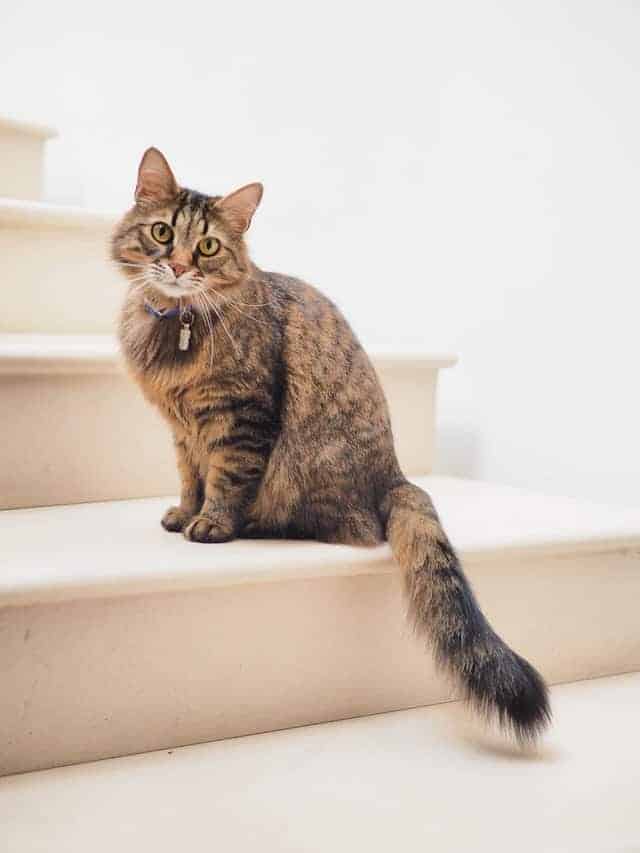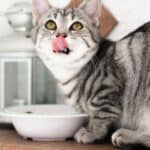
Although rare, all mammals can suffer from it, including cats and dogs. How to recognize cat dwarfism and all breeds that do not grow.
Like humans, our feline friends can also suffer from dwarfism, although it is a rather rare condition. Usually this problem affects only a part of these felines, that is the limbs that remain of a ‘limited’ length and do not grow. After having given some elementary scientific hint of dwarfism, we will move on to analyze all the breeds of cats that will never grow and will always remain ‘small in size’. Everything you need to know about cat dwarfism, how to recognize it and live with it.
Dwarf cat: some scientific hints
As with all mammals, felines can also be affected by dwarfism which, in medicine, is known by the definition of hyposomatotropism or pituitary dwarfism in cats. This is a problem caused by abnormal production of growth hormone, which is contained in the pituitary gland. Although it rarely occurs, it is not impossible for a cat to remain small, but in what sense? When we say that a cat is dwarf we are referring to a feline whose limbs are shorter than normal. These animals therefore have a limited development but in appearance (not in size) they are completely identical to their peers. This means that their life takes place exactly like any other feline specimen, with the same eating habits and suffering from the same pathologies.
What happens to feline bones in case of cat dwarfism? Visually they appear abnormal, at least in size. It is a hereditary defect that affects the bonding of the cartilage of the bones: in this case we speak of ‘morphological dwarfism‘. The limbs therefore remain shorter, while the rest of the body develops normally. If, on the other hand, it is about ‘endocrine dwarfism‘, when there is a dysfunction of the pituitary, the growth hormone is missing because it is not produced. Also in this case it would be a hereditary problem. It would be good to know the cat’s ‘family history’ in order to rule out the possibility of this problem.
Cat dwarfism: signs and causes
Although it is a rare phenomenon to see in cats, it can happen that a feline has inherited it from parents and grandparents. Usually if either parent carries the osteochondrodysplasia gene and may not even have ‘obvious symptoms’ of dwarfism. The signs of dwarfism can be different and do not necessarily affect only the bones of the limbs: in fact there are cases of cats with a larger head than the rest of the body, others with crooked teeth or a disproportionate nose compared to the rest of the face.
When it occurs in kittens, their joints usually appear large but the size does not reach the ‘normal’ length. The spine also appears to curve to one side and the front legs tend to curve outward.
The most frequent causes of dwarfism are usually:
- failure of the pituitary gland to develop,
- tumors of the aforementioned gland,
- infectious diseases of the same.
Even within the same litter isolated cases of dwarfism can occur, so a puppy will grow up less respectful of its siblings. And we would also notice it because the latter would be less ‘receptive’ to stimuli that come from outside.
Is cat dwarfism dangerous?
The answer is: it depends! A dwarf cat has the same chances of living for a long time as its peers but at the same time it can also develop the same diseases with the same risks. If it is osteochondrodysplasia it is necessary to evaluate the problem with appropriate tests and in-depth examinations. There is no cure for such problems. Even though it is pituitary dwarfism, many cats will not regularly grow either in external dimensions or in internal organs. Again, there is no cure. The fact that there are no remedies for this condition does not mean that dwarf cats are destined to die before the others: in case they fail to carry out daily activities, they could equip themselves in an alternative way.
What is selective dwarfism
From the mid-twentieth century, a real trade in breeds affected by dwarfism was born. Since then it has been precisely the breeders who have selected small cat breeds to give birth to genetic mutations in their kennels. Think of some cat breeds, such as the Munchkin, recognized as a ‘dwarf cat’ by the International Cat Association, and is mated with other small cat breeds. The controversy raised by the various associations in defense of felines centers on the high probability these cats have of developing genetic diseases.
Cat dwarfism: dwarf breeds

Now let’s see what all the cat breeds are that will never grow up and will always remain pocket sized.
- Munchkin cat: considered the ‘progenitor’ of all dwarf cats, this feline is famous for its short legs, a problem caused by a recessive gene. The rest of the body appears to be of normal size. So it remains small but sturdy in its dimensions which usually do not exceed 33 cm and a weight that varies between two and four kg.
- Singapura Cat: famous for being very playful and loves being in company. He therefore adapts very well to family life and also to coexistence with his peers. It is a very active specimen, which loves to climb on furniture and surfaces.
- Dwelf: Born from a cross between Munchkin, Sphynx and American Curl, this feline is hairless and has a muscular, sturdy body. The front legs are shorter than the hind ones: it has a long tail and curved ears, which resemble those of an elf (hence the name).
- Bombay: Black in color, this cat is often referred to as the ‘panther of cats’. It is distinguished by its dark and short, shiny coat, and has a weight that varies between 4 and 5 kg. In fact, it was a breeder, Nikki Horner, who created this breed to promote this similarity. Only in 1976 was the breed recognized by the Cat Fanciers Association.
- Genetta: dwarf cat, whose first specimens are very recent. It seems that only in 2006 this feline was born from the crossing of Muschkin, Bengal and Savannah. It is distinguished by its short legs, long body and round ears. It also has a very long tail compared to the rest of the physique.
- Lambkin: always the result of crossings, this time between Munchkin and Rex Selkirk. He is recognized by his long, curly and dull coat, which makes him look similar to a sheep.
- Ceylon : the name derives from the island of Sri Lanka, where it comes from. It first appeared on the European market in 1964. Although it is a delicate-looking feline, it actually has a very strong and sturdy body, consisting of 5-10 kg of weight.






